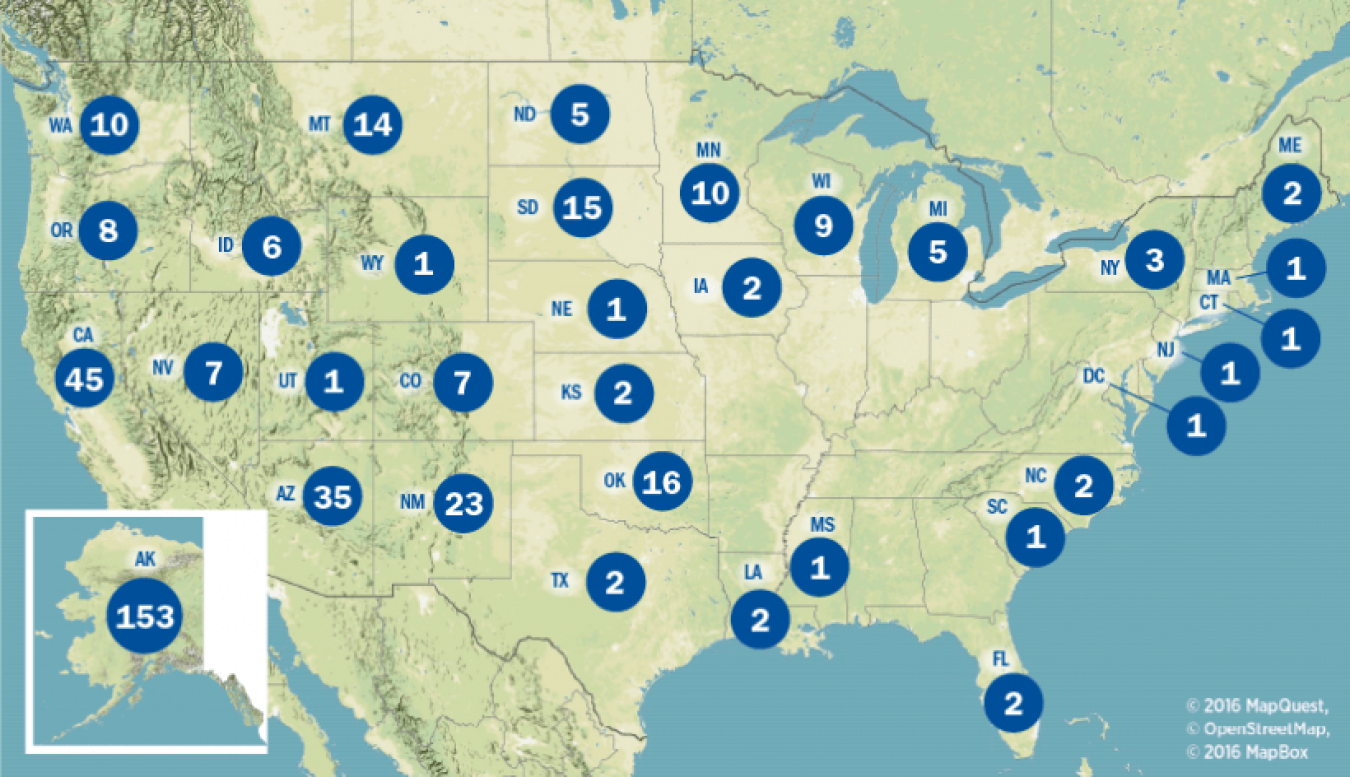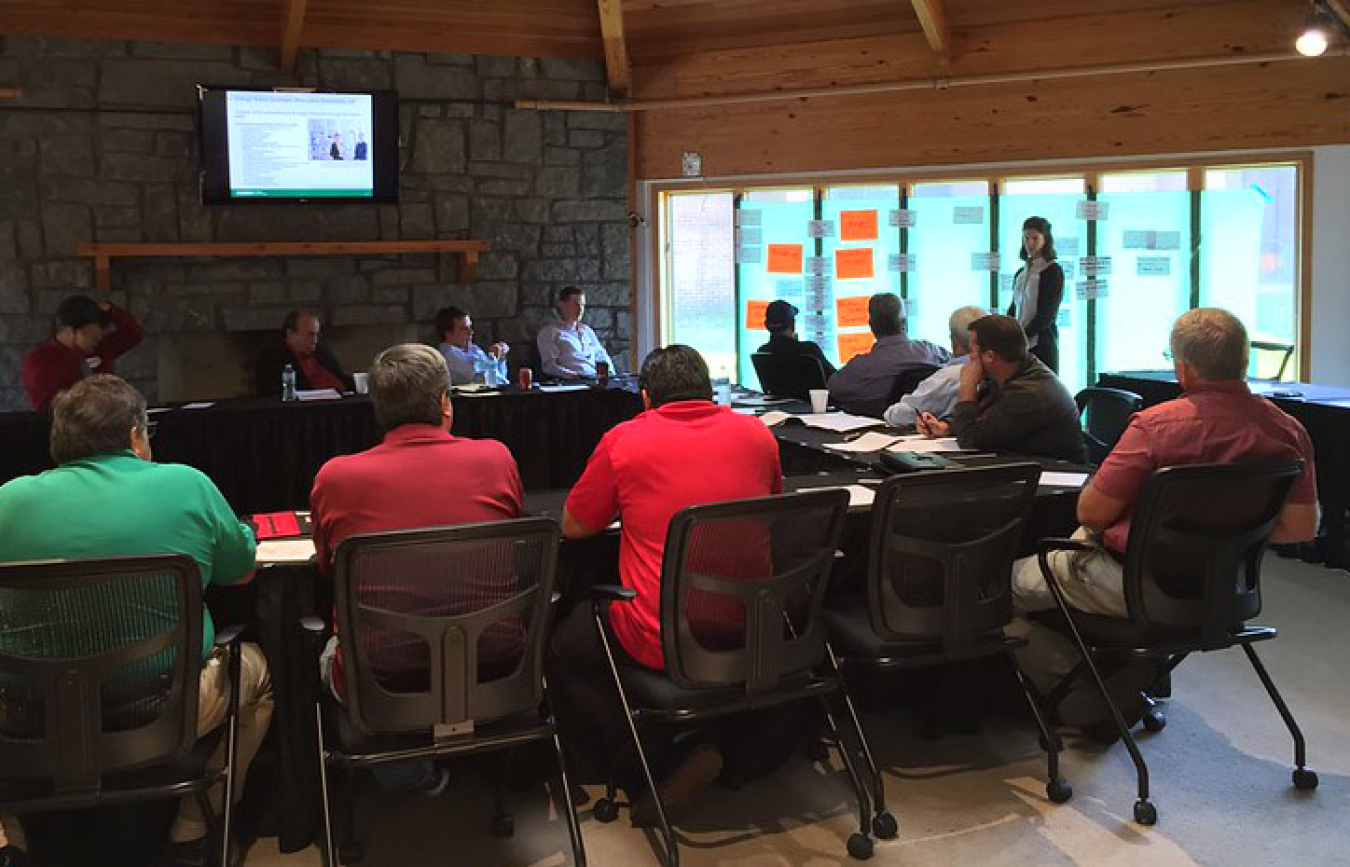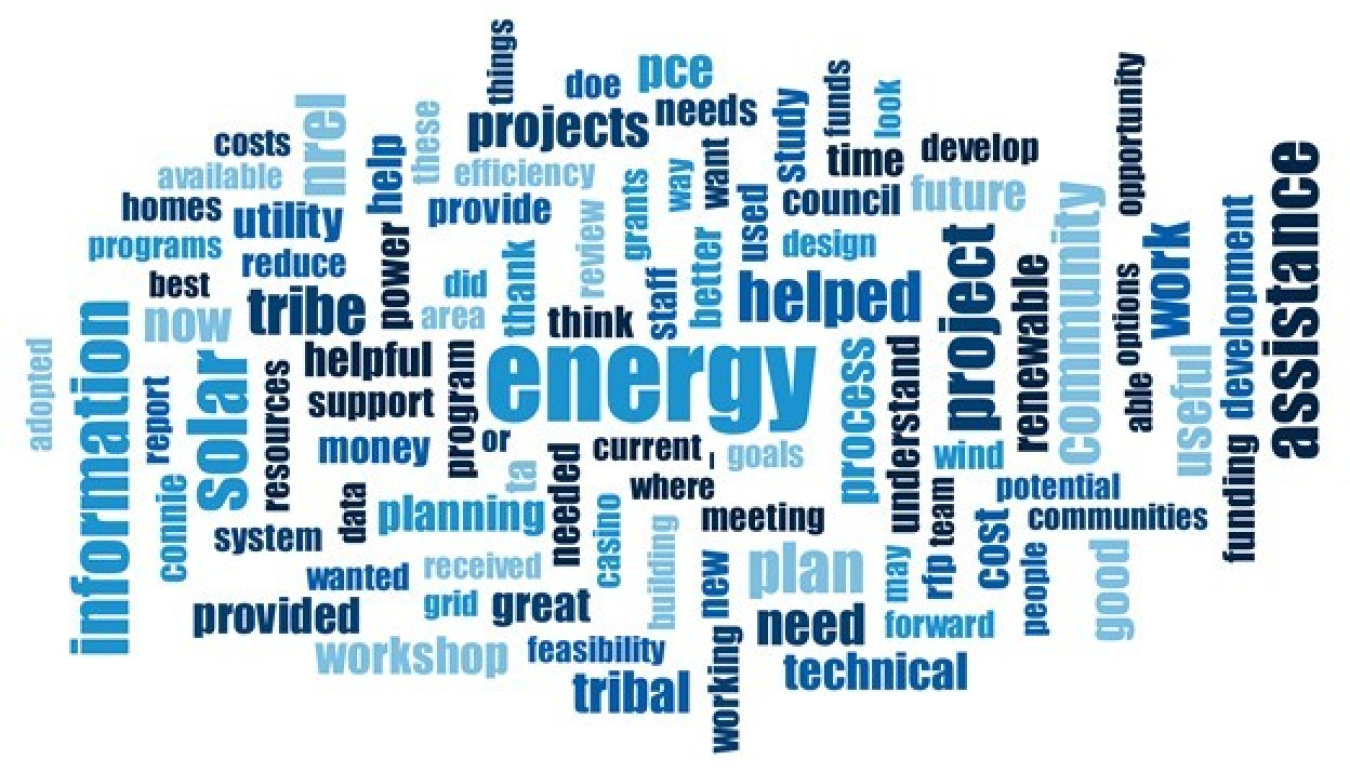Strategic energy planning is a collaborative visioning exercise in which tribes identify their energy resources and explore their options.
Office of Indian Energy Policy and Programs
September 21, 2022Strategic energy planning is a collaborative visioning exercise in which tribal communities identify their energy resources, explore their options, and map out a path to the energy future they envision for themselves.

Between 2010 and 2021, the DOE Office of Indian Energy fulfilled 84 requests for strategic energy planning, which represents over 21% of the nearly 400 technical assistance requests completed since 2010.
How It Works
Tribal strategic energy planning is a community-driven effort facilitated by experts from the U.S. Department of Energy Office of Indian Energy (DOE), DOE national laboratories, and other partnering organizations.
As one of the categories of technical assistance offered by the Office of Indian Energy, strategic energy planning is available upon request to:
- Federally recognized Indian tribes, including Alaska Native villages
- Tribal entities—including Alaska Native regional and village corporations, intertribal organizations, and tribal energy development organizations.
Before the COVID-19 pandemic hit in 2020, strategic energy planning—like just about everything else—looked different. Typically, it took the form of an intensive two-day on-site workshop. These days, it is delivered, in whole or in part, through a series of virtual workshops designed to assist tribal leaders, elders, and staff in developing an energy plan—at no cost to them.
How To Request It
Submitting a request is surprisingly simple and consists of five easy steps:
- Visit the Request Technical Assistance page on our website.
- Review the types of technical assistance we offer.
- Review the information on who is eligible to request technical assistance and, as this is a collaborative effort, what the requestor is agreeing to when submitting a request.
- Click on either of the "Request Technical Assistance" links (top right or bottom of the page) to open an email.
- Provide your name, tribal affiliation, email, and phone number, answer four basic questions, and hit send.

NREL Project Leader Megan Day facilitated the Muscogee Creek Nation Strategic Energy Planning workshop in Oklahoma in 2015. Now strategic energy planning is done virtually.
What You Will Get
The framework we use to deliver strategic energy planning is flexible and varies for each community based on their unique challenges. However, it may include:
- A facilitated process to develop an energy vision
- An initial assessment of energy resources
- Expert analysis of energy options
- Development of a viable road map for project development.
Although the specific elements and scope of strategic energy planning may differ from one Native community to the next, it is always a collaborative, consensus-based process. Informed and driven by the specific needs, goals, concerns, and values of the community, it may involve the development of specific project plans and/or a community energy vision and a road map for getting there.
By submitting a technical assistance request, you are agreeing that:
- You, as the requestor, have the authority to request assistance on behalf of the eligible tribal entity
- The request applies specifically to advancing a tribal energy goal or energy project
- A designated tribal contact will be available and responsive to DOE’s and/or its technical assistance provider’s requests
- The designated tribal representative will be available to participate on a call to discuss the scope of the assistance
- The designated tribal representative will provide any additional information (e.g., energy usage data) requested in a timely manner.
Once we receive your request, someone on our team will contact you to set up a call to discuss and define the support.
"The Strategic Energy Planning process gives tribes and Native communities the knowledge, information and tools to chart a path toward their energy goals," said Senior Engineer and Deployment Specialist Lizana Pierce, who oversees the Office’s technical assistance efforts.
That’s our take on it. But don’t take it from us—read what they have to say.
What Tribes Say About Strategic Energy Planning
Below, in their own words, some recent tribal recipients of strategic energy planning reflect on their experience.

Helpful Highlights
For the Confederated Tribes of Coos, Lower Umpqua and Siuslaw Indians (CTCLUSI), some of the most practicable elements of their strategic energy planning were:
- Developing an energy vision
- Gathering energy consumption and cost data
- Brainstorming their energy goals and aspirations.
"It’s useful to have a dedicated time to share ideas and run things off one another," they said.
CTCLUSI highlighted the regional renewable energy opportunity analysis as particularly beneficial. "It’s very important to know the resources available so that we can make decisions based on evidence and feasibility."
The Ho-Chunk Nation of Wisconsin found gathering and analyzing property-wide consumption data to be among the most useful exercises because it informed their new strategy to move cost-effective renewable projects forward. "Understanding energy use by all facilities, and cost, really helps in identifying priorities, or at least recognizing need," they said.
The Pinoleville Pomo Nation said they benefited most from the solar photovoltaic analysis that informed their path to realizing their net-zero goal of producing all the electricity their tribal administration complex uses while also providing them with "the most effective road maps to achieve energy independence for the most essential governmental buildings."
Top Takeaways
Participants from CTCLUSI were delighted with how effective strategic energy planning was in a virtual environment. "The virtual training worked!" they said. "We had a great facilitator who went far and above our expectations to deliver the expected results. The level of participation from all involved was outstanding."
Pinoleville Pomo Nation participants were similarly impressed. Although the strategic energy planning was all done virtually, the facilitator was "able to find tools to create interactive sessions that normally are only achieved in person," they said. "He was well prepared for each topic, did a lot of work in between sessions, always delivered what he committed to do, and helped us create a great energy plan for us to follow through."
Like so many Tribes who receive strategic energy planning technical assistance from the Office of Indian Energy, CTCLUSI valued the focus and motivation the collaborative process provided. Along with kickstarting their development of a tribal energy program, it created momentum for reaching their long-term energy goals.
"It is rewarding to support tribes in bringing their short-, medium-, and long-range goals into focus and creating viable pathways for meeting those milestones," said National Renewable Energy Laboratory Senior Engineer Tony Jimenez, who has supported several tribes in developing strategic energy plans.
CTCLUSI’s final strategic energy plan was approved by their Tribal Council in June, and they have since completed solar feasibility studies on tribal buildings and submitted applications for funding opportunities. "With the meaningful effort of the energy team members, we have helped create a plan to get us rolling in the right direction to meet the needs of our energy sovereignty future," they said.
Learn More and Request Strategic Energy Planning
Learn more about strategic energy planning and other technical assistance available from the DOE Office of Indian Energy.

